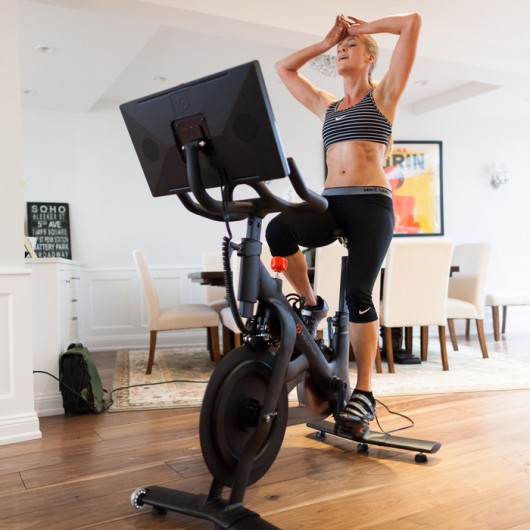The No.1 reason that people give for not exercising is that they don’t have enough time.
Cue the FAST FITNESS revolution! “Get fit in only 8 minutes, three times per week”. Is this really possible? In this article we look at the evidence surrounding FAST FITNESS and give you the facts to let you decide whether this type of exercise training is right for you.
What is FAST FITNESS?
The FAST FITNESS revolution challenges government exercise guidelines which tell us that we should be doing at least 150 minutes of moderate exercise per week (or 75 minutes of vigorous exercise) in order to gain the health benefits of exercise.
The FAST FITNESS revolution suggests that we only actually need to do 24 minutes (8 minutes x 3) of vigorous exercise per week to get fitter, improve our cardiovascular health and reduce our risk of diabetes.
FAST FITNESS (also known as HIIT: High Intensity Interval Training) recommends an exercise routine that includes:
- A 3 – 5 minute warm-up
- 20 seconds to 1 minute of extremely high intensity exercise (e.g. sprinting) immediately followed by an active rest period (e.g. light jogging), and then repeated 3 or 4 times. These high intensity intervals could be performed on a track, treadmill, rower or exercise bike. The duration of the rest period varies according to the program and the fitness levels of the individual.
- A 3 -5 minute cool-down
TABATA training is another form of High Intensity Interval Training in which the high intensity intervals are performed for 20 seconds, followed by 10 seconds of rest, and then repeated 8 times (4 minutes in total!)
Is FAST FITNESS better?
Traditional exercise routines usually include 20 – 50 minutes of steady-state exercise, often performed on exercise equipment. Supporters of FAST FITNESS suggest that in order to gain health benefits from exercise and improve our fitness levels, we do not need to be exercising for so long – that performing short duration workouts of HITT is far superior.
One of the biggest fans of FAST FITNESS is Michael Mosley, a journalist in the UK. Michael has recently published a highly successful book called FAST EXERCISE. The book was published after his documentary called ‘The Truth About Exercise’ (aired on British television in 2012) claimed that traditional views about exercise may be misguided. Mosley’s book is largely based on the work of researchers at Heriot Watt University in Edinburgh who published a ground-breaking (Babraj et al., 2009). In this study, sixteen men were asked to perform High Intensity Interval Training three times a week for two weeks. The training included all-out sprints performed on an exercise bike for 30 seconds, followed by a few minutes rest. The intervals were repeated four times. The results showed a 23% increase in insulin function. Insulin is a hormone which helps our bodies to regulate blood glucose levels. If insulin functions well (e.g. is sensitive), then our future risk of diabetes decreases.
Other studies have shown that HITT improves the fitness levels of participants at a far quicker rate than traditional exercise, though the degree to which fitness levels improve will partly depend on the genetic make-up of the individual. A study conducted in 2005 reported that the endurance capacity of cyclists doubled after only two weeks of High Intensity Interval Training (Burgomaster et al., 2005). Other studies have suggested that HITT is particularly useful for boosting the fitness levels of athletes who are already well trained but are failing to make any significant improvements with their usual fitness routines. A study conducted in 2009 on well-trained rowers showed an improvement of 8.2 seconds on a 2000 metre row time after just 4 weeks of High Intensity Interval Training (Driller et al., 2009).
HITT also appears to increase the resting metabolic rate for a longer duration (up to 24 hours) than traditional exercise routines do (King, 2001) . This may be of benefit to those hoping to lose weight from exercise as an increased resting metabolic rate = an increase in the amount of calories burned.
FAST FITNESS (HITT) therefore appears to have many benefits over traditional steady exercise routines, but it is not suitable for everyone……
High Intensity Interval Training puts considerable stress on the cardiovascular system. During exercise the heart rate increases and blood pressure rises as the body tries to deliver oxygen carried in the blood to the working muscles. During high intensity exercise, these systems are worked to their extremes. This can be risky for some individuals – particularly for those who have underlying medical conditions.
In January 2013, Andrew Marr, a British broadcaster and journalist suffered from a stroke after doing High Intensity Interval Training on a rowing machine. This story was well publicised and headlines such as ‘Is exercise to blame for Andrew Marr’s stroke?’ debated whether this type of intense exercise is safe.
Andrew appears to believe that his stroke was caused by overworking and intense exercise. Overworking, and stress in general, can contribute towards high blood pressure. High blood pressure is a major risk factor for strokes and heart attacks. Before beginning any exercise programme, it is advisable to have a short health check with your GP/physician which includes a blood pressure measurement. Blood pressure monitors that can be used at home are also readily available and may be of particular benefit to those that suffer from ‘white coat syndrome’ in the presence of a doctor or nurse! If your blood pressure is greater than 140/90mmHg, it is not recommended to participate in High Intensity Interval Training!
Is FAST FITNESS right for me?
Yes! But, only if…………….
- You have no health problems and already have a good base level of fitness.
AND any of the following:
- You have reached a plateau in your fitness and want to quickly boost your fitness levels.
- You are worried about your risk of diabetes (e.g. there is some family history)
- You have a limited amount of time available to exercise
- You are bored with your current workout and want to try something different
- You have just invested in some home exercise equipment and want to make the most of it
No! If……………
- You have any health problems – particularly if these include heart problems or high blood pressure
- You haven’t been regularly exercising for some time
- You are not comfortable with pushing yourself to the limits
This article was written by Sheona Bird, BSc, MSc, ACSM, Reps Level 4
Sheona is a health, fitness and wellbeing specialist who has been providing expert advice, guidance and one-to-one coaching and instruction since 2005.
 Optimum Fitness Fitness News and equipment reviews
Optimum Fitness Fitness News and equipment reviews


